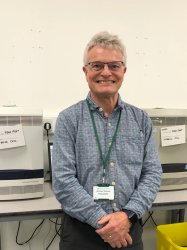BibTex format
@article{Campbell:2020:10.1128/JVI.02107-19,
author = {Campbell, EA and Reddy, VRAP and Gray, AG and Wells, J and Simpson, J and Skinner, MA and Hawes, PC and Broadbent, AJ},
doi = {10.1128/JVI.02107-19},
journal = {Journal of Virology},
pages = {1--16},
title = {Discrete virus factories form in the cytoplasm of cells co-infected with two replication competent tagged reporter birnaviruses, that subsequently coalesce over time.},
url = {http://dx.doi.org/10.1128/JVI.02107-19},
volume = {94},
year = {2020}
}

